The line between a healing remedy and a deadly poison has always been thin. Throughout history, healers, doctors, and apothecaries have explored this fragile boundary, using dangerous substances for therapeutic purposes. Many natural toxins, though potentially lethal, formed the foundation of medical treatments in various cultures — a legacy that still echoes in modern pharmacology.
In small doses, these substances could relieve pain, stimulate the heart, or treat illnesses. But a slight miscalculation in dosage could turn their benefits into tragedy. Understanding these compounds is a journey through the history of medicine, revealing how empirical knowledge often relied on risk to save — or end — lives.
1. Opium: The Ancient Painkiller
Extracted from the poppy (Papaver somniferum), opium is one of the most historically significant substances in traditional medicine. Used by civilizations such as Mesopotamia and Egypt, it was administered to relieve severe pain, treat diarrhea, and induce sleep.
Rich in alkaloids like morphine and codeine, opium has strong analgesic and sedative properties. While it revolutionized pain management, long-term use led to addiction — a problem that persists today with synthetic opioids. These compounds are still used in medicine, under strict regulation.
2. Aconite: Nature’s Arsenic
Known as monkshood or wolfsbane (Aconitum napellus), this beautiful mountain flower is dangerously toxic. Its roots contain powerful alkaloids, such as aconitine, which affect the nervous system and can cause numbness, paralysis, and even cardiac arrest.
Despite its toxicity, aconite was used in traditional Chinese and European medicine as an analgesic and fever reducer. Its effects on nerves helped alleviate severe pain and inflammation, though the risk of poisoning was constant. Today, its medical use is highly restricted, mainly in diluted homeopathic forms.
3. Digitalis: The Heart-Regulating Plant
Foxglove (Digitalis purpurea), known for its bell-shaped flowers, hides compounds that have powerful effects on the heart. Digitalis and its derivatives were isolated in the 18th century and used to treat heart failure and arrhythmias.
Digitalis strengthens heart contractions and helps regulate heartbeat, but its therapeutic window is extremely narrow. Slight overdoses can cause nausea, confusion, and cardiac arrest. Still, it marked a milestone in cardiovascular treatment and inspired modern cardiac medications.
4. Hemlock: From Deadly Poison to Sedative
Famous for being the poison that killed Socrates, hemlock (Conium maculatum) is a toxic plant that causes muscle paralysis and death by asphyxiation. Its main toxin, coniine, disrupts nerve signals to the muscles.
Surprisingly, hemlock was used in small doses as a sedative and antispasmodic in European medicine during the 18th and 19th centuries. It was prescribed for chronic pain, neurological disorders, and even epilepsy. With modern advances, its use was abandoned due to difficulty in controlling its toxicity.
5. Belladonna: Deadly Beauty
Belladonna (Atropa belladonna) is notorious for both cosmetic and medicinal uses. In Renaissance Italy, women used its extract in their eyes to dilate pupils and enhance their beauty — hence the name “belladonna,” or “beautiful woman.”
This plant contains alkaloids like atropine and scopolamine, which affect the parasympathetic nervous system. Medicinally, these compounds were used as antispasmodics, muscle relaxants, and even pre-anesthetics. Atropine is still used today in emergencies, such as for bradycardia (slow heart rate).
6. Curare: Paralysis That Saves
Curare is a plant extract from the Amazon rainforest used by Indigenous peoples to paralyze prey during hunting. Despite its reputation as a poison, it entered modern medicine in the 20th century as a muscle relaxant in surgeries, thanks to the alkaloid tubocurarine.
By blocking nerve signals to the muscles, curare allowed doctors to perform safer, more precise surgeries with less need for deep anesthesia. Its use is controlled but remains important in surgical settings.
7. Toxins That Inspired Modern Drugs
Beyond these, many natural toxins have inspired modern pharmaceuticals. Examples include:
- Botox (botulinum toxin): derived from bacteria, used in small doses to treat muscle disorders and wrinkles.
- Snake venom: studied for its potential in treating high blood pressure and developing powerful painkillers.
- Scorpion and spider venom: investigated for anti-cancer and neurological applications.
Nature acts as a vast chemical laboratory, where lethal compounds, when carefully studied, can become invaluable medicines.
Poison or Cure? The Difference Lies in the Dose
A quote attributed to the 16th-century physician Paracelsus captures this reality: “The dose makes the poison.” That principle still holds true today. Many substances are harmless in small amounts and deadly in higher ones — a truth that applies to medicine, food, and supplements alike.
Modern pharmacology was born from studying and controlling these substances. Today, active ingredients are isolated, purified, and standardized, allowing for safe and effective use. Yet, the natural origins of many remedies serve as a reminder of humanity’s ingenuity in the face of nature’s dangers.





